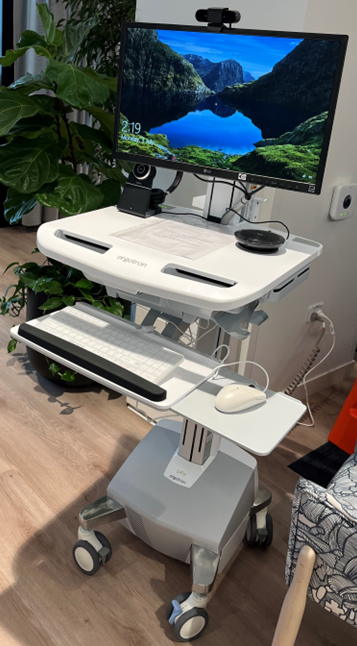Telehealth in Residential Aged Care Homes
Helping Residential Aged Care Home residents access telehealth
SEMPHN helps residential aged care homes (RACHs) set up telehealth equipment so residents can consult health professionals virtually. Additionally, sharing healthcare information to platforms like My Health Record helps residents keep their medical history up to date.
RACH staff received training in these services, so residents receive the best care possible with GPs, specialists and allied health professionals.
RACHs in the SEMPHN catchment received grants for each site to upgrade virtual consultation facilities, technology and improve access to telehealth.
Approved equipment and installation was provided at no cost to RACHs in the SEMPHN region.
Grants were used for:
- enhancing the wi-fi connection in the home
- purchasing telehealth equipment
- improving telehealth facilities and/or consult rooms.
The initiative is a response to the final report of the Royal Commission into Aged Care Quality and Safety, published in March 2021.
Telehealth Training Program
The Telehealth Training program, developed by the PHN Cooperative, was created to provide comprehensive online training for the delivery of telehealth for residential aged care. This training helps you provide an evidence-based telehealth service for aged care residents, including setup, governance, management and usage of telehealth.
The training is endorsed Continuing Professional Development (CPD) for general practitioners (GPs) and nurses (practitioners, registered and enrolled). Endorsement is provided through the Australian College of Rural and Remote Medicine (ACRRM), the Royal Australian College of General Practitioners (RACGP), and the Australian College of Nursing (ACN).
GPs and nurses may also claim additional CPD hours, where they have explored additional research, reflected on their practice, or engaged in implementation of the learning.
Learn more
This training is now available free of charge, to all Commonwealth funded residential aged care homes and clinicians providing telehealth to residents in aged care, Australia wide.
The telehealth trolley in action
The Ergotron battery powered trolley is fully equipped with:
- Notebook
- Large monitor (can upgrade to clinical monitor)
- Keyboard and mouse
- Portable camera
- Speakers and microphone
- Adapters and cords
Optional extras include:
- WiFi booster
- Laptop charging stations
Useful Tips
- Keep it plugged in when not in use
- Know the password to access the computer
- Ensure there is internet and email access
Ideas for troubleshooting
If the computer won’t turn on:
- check battery status (plug in to power if needed)
- check the monitor screen is turned on
- open the trolley tray and turn the laptop on manually
- check that all plugs inside the tray are securely connected
Run a telehealth pre-call test to make sure all equipment is working correctly:
https://vcc.healthdirect.org.au/precall
Demonstrations
- Alfred Health - https://www.alfredhealth.org.au/services/telehealth
- Monash Health - https://monashhealth.org/services/telehealth/
- Peninsula Health - https://www.peninsulahealth.org.au/services/telehealth/
Telehealth resources
Explore all services and resources
View all services and resources across a number of topics.
View services and resources


